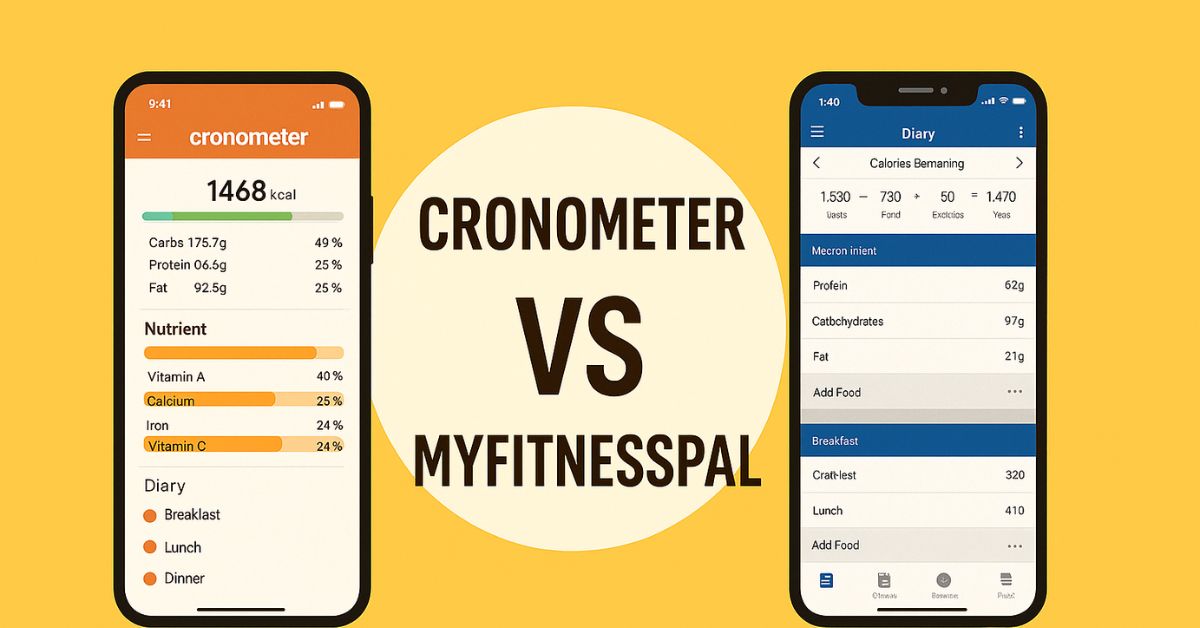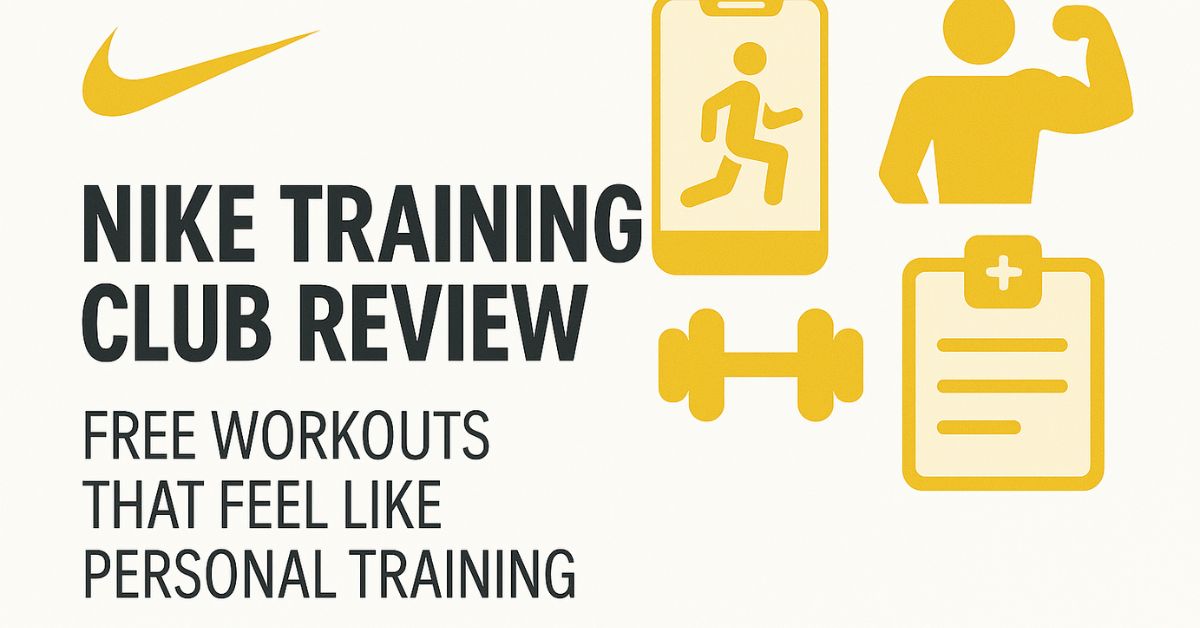If you’re serious about improving your nutrition, two names come up over and over: Cronometer and MyFitnessPal. Both have millions of users, both make food logging simpler than pen-and-paper, and both can help you lose weight, build muscle, or simply eat more mindfully. But they take very different approaches.
In this deep dive, you’ll learn how they compare on accuracy, database size, ease of use, coaching features, integrations, pricing, privacy, and more—so you can pick the one that fits your goals and personality.
- Choose Cronometer if you care about micronutrients (vitamins, minerals, amino acids, fatty acids) and want more rigorous data and granular targets. It’s built for data-driven eaters, dietitians, and anyone optimizing health metrics beyond calories and macros. Cronometer
- Choose MyFitnessPal if you want the fastest logging experience and the widest food database plus recipes, meal scanning, and a huge community. It’s ideal for people who value speed and convenience to keep the habit going. MyFitnessPal+1
Quick Comparison Table
| Feature | Cronometer | MyFitnessPal |
|---|---|---|
| Core Philosophy | Accuracy, micronutrient depth | Speed, convenience, community |
| Micronutrient Tracking | Full vitamin/mineral profile out of the box | Mostly macro-focused; more advanced analysis in Premium |
| Database Approach | Emphasis on curated/verified entries | Very large user-contributed database |
| Logging Speed | Fast, but oriented to detail | Very fast with barcode/meal scan & smart features |
| Coaching & Insights | Detailed targets, nutrition “scores” & trends | Food analysis, diary insights, and guided plans (Premium) |
| Integrations | Apple Health, Health Connect (Google Fit), Samsung Health, device partners | Apple Health/Google Fit and many fitness devices |
| Best For | Data nerds, diet quality optimizers, athletes who monitor intake precisely | Habit builders, macro counters, general weight loss |
| Ads | Ad-free with Gold | Ad-free with Premium |
| Platforms | iOS, Android, Web | iOS, Android, Web |
Sources: Cronometer features and Gold overview; MyFitnessPal product pages and Premium feature list. MyFitnessPal Help+3Cronometer+3Cronometer+3
What Each App Tries to Do (and for Whom)
Cronometer: precision first
Cronometer’s pitch is straightforward: track everything that goes into your body, not just calories. From day one, it emphasizes a complete micronutrient panel—vitamins A–K, minerals like magnesium and zinc, omega-3s, amino acids, and beyond. The goal is diet quality as much as quantity. That’s why clinicians and meticulous self-trackers gravitate to it. Cronometer+1
MyFitnessPal: keep you logging
MyFitnessPal revolves around frictionless logging. It’s designed to be fast, familiar, and social with a massive food library, barcode scanning, and extras like meal scan, voice logging, and diary insights in Premium tiers. If adherence is your #1 success metric, MyFitnessPal’s UX is hard to beat. MyFitnessPal+1
Accuracy & Database Quality
- Cronometer leans on curated sources (e.g., NCCDB/USDA style datasets) and highlights complete nutrient profiles. The result is fewer duplicates, tighter naming, and more confidence when you’re tracking micronutrients or special diets. This is a core reason many dietitians prefer it. Cronometer
- MyFitnessPal has one of the largest food databases in the world—great for speed and breadth, but variability in user-added items can introduce inconsistency unless you select verified entries. Premium tools help you analyze food choices and trends. MyFitnessPal+1
Bottom line: If micronutrient accuracy matters (e.g., iron intake on a plant-based diet), Cronometer shines. If you just need to log last night’s takeaway quickly, MFP’s breadth wins.
Micronutrients vs. Macros
- Cronometer treats micronutrients as first-class citizens—you’ll see detailed dashboards and can set custom targets. It even adds nutrition “scores” and specialty insights as they roll out updates. Cronometer+1
- MyFitnessPal is macro-centric by default (calories, protein, carbs, fats). Premium adds more flexible goals, food analysis, and better diary breakdowns, which is often enough for weight loss and fitness goals. MyFitnessPal Help
Verdict: For optimizing diet quality, Cronometer. For hitting macro targets with minimal fuss, MyFitnessPal.
Logging Speed & Everyday Usability
- Cronometer: Clean design, barcode scanning, and quick adds—but you’ll notice it nudges you toward precise entries and complete nutrient data. That’s a feature, not a bug, for detail-oriented users. Cronometer
- MyFitnessPal: Built for speed—barcode scan, meal scan, voice input, and smart search that learns your habits. It’s the king of “I can log this in 20 seconds and move on.” MyFitnessPal Help
If your biggest barrier is “I fall off because logging takes too long,” MFP gives you more ways to stay consistent.
Recipes, Meal Plans & Community
- Cronometer supports recipes and offers advanced nutrient targets; its vibe is more analytical and less social. Power users love building repeatable meals with full nutrient detail. Cronometer
- MyFitnessPal includes a large recipe ecosystem, guided plans, and a huge community—useful if you’re motivated by streaks, friends, and shared challenges. MyFitnessPal+1
Integrations & Device Support
Both apps integrate with the major health platforms and wearables.
- Cronometer syncs with Apple Health and, on Android, via Health Connect (bridging Google Fit and others). Support documentation confirms Apple Health and mobile integrations (Samsung Health, Google Fit via Health Connect). Cronometer Support+2Cronometer Support+2
- MyFitnessPal connects to Apple Health/Google Fit and many popular devices, allowing exercise and step imports to adjust your diary. (Exact device lists vary; check the latest in-app.) MyFitnessPal
Note: Cronometer previously communicated changes around direct Google Fit connections; current guidance routes Android through Health Connect. Check your device’s current path if you’re migrating data. Cronometer Support
Pricing & Tiers
Both offer free logging with optional premium tiers.
- Cronometer Basic: Free nutrition tracking with full macro and micronutrient logging; Gold removes ads and unlocks deeper analytics and history. Cronometer+1
- MyFitnessPal: Free core logging; Premium removes ads and adds advanced features like macronutrients by gram, food analysis, intermittent fasting tools, and faster logging extras (barcode/meal/voice scan bundles highlighted in MFP materials). MFP also markets Premium+ options in some regions. Always check the current price in your country. MyFitnessPal Help+2MyFitnessPal+2
Takeaway: Both are usable for free. If you hate ads and want deeper analysis, you’ll likely upgrade on either platform.
Privacy, Ads & Exporting
- Cronometer Gold specifically highlights an ad-free experience. Data exports and long-term history are part of its premium value. Cronometer
- MyFitnessPal Premium removes ads and gives you priority on diary insights and granular goal settings. Export tools are available; check your plan tier for current capabilities. MyFitnessPal Help
If a clean, distraction-free interface matters, plan for a paid tier on either app.
Coaching Features & Insights
- Cronometer: Highly detailed dashboards, per-nutrient targets, and evolving nutrition score style guidance to highlight micronutrient coverage (e.g., Men’s Health Nutrition Score). Great for refining diet quality. Cronometer
- MyFitnessPal: Food Analysis shows best/worst foods you log, and different goals by day can match training cycles (e.g., high-carb leg day, low-carb rest day). MyFitnessPal Help
Athletes and biohackers often appreciate Cronometer’s granularity; flexible macro planners may prefer MFP’s weekly cadence tools.
Who Should Choose Which?
Choose Cronometer if you:
- Want complete micronutrient coverage (not just macros). Cronometer
- Are following a nutrient-sensitive diet (pregnancy, vegan, low-FODMAP, therapeutic).
- Love data quality and verified entries.
- Work with a dietitian/coach who expects precise intake logs.
Choose MyFitnessPal if you:
- Need the fastest possible logging to stay consistent. MyFitnessPal Help
- Value recipes, plans, and community features. MyFitnessPal
- Focus mainly on calories and macros rather than micro detail.
- Want habit-building tools and diary insights to keep you on track. MyFitnessPal Help
Real-World Scenarios
1) Weight loss with a hectic schedule
You’re juggling work and family, and the main challenge is keeping up the logging habit. MyFitnessPal’s scanning and speedy workflows reduce friction, which is the #1 predictor you’ll keep logging beyond week four. MyFitnessPal Help
2) Plant-based athlete optimizing iron & B-12
You need to ensure specific micronutrient sufficiency daily. Cronometer’s micronutrient panel and curated entries give you the confidence to fine-tune your diet. Cronometer
3) Body recomposition with carb cycling
You want different macro goals by day and easy diary insights. MyFitnessPal Premium’s flexible goal settings and analysis fit nicely. MyFitnessPal Help
4) Post-deficiency recovery
You’re working with a clinician on correcting a deficiency (e.g., magnesium). Cronometer makes it straightforward to track intake against targets while keeping an eye on other nutrient interactions. Cronometer
Pros & Cons at a Glance
Cronometer
Pros
- Best-in-class micronutrient visibility. Cronometer
- Emphasis on verified data.
- Detailed targets and nutrition scores evolving over time. Cronometer
- Solid health platform integrations (Apple Health, Health Connect). Cronometer Support+1
Cons
- Slightly more time-intensive when you just want to ballpark.
- Social/community features are not the focus.
MyFitnessPal
Pros
- Huge database and very fast logging with barcode/meal/voice scan tools (Premium). MyFitnessPal Help
- Robust recipe ecosystem, guided plans, and community. MyFitnessPal
- Flexible macro goals by day for periodized training. MyFitnessPal Help
Cons
- User-generated entries can vary in accuracy unless you’re selective.
- The most comfortable experience (ad-free, advanced tools) is in Premium. MyFitnessPal Help
Frequently Asked Questions
Is Cronometer free?
Yes—Cronometer’s Basic plan includes full macro and micronutrient tracking. Gold removes ads and unlocks deeper analytics and history. Cronometer+1
Is MyFitnessPal free?
Yes—core logging is free. Premium removes ads and adds features like macronutrients by gram, food analysis, intermittent fasting tools, and faster logging extras. Pricing varies by region and plan (Premium/Premium+). MyFitnessPal Help+2MyFitnessPal Help+2
Which has better data accuracy?
Cronometer prioritizes curated, complete entries—especially valuable for micronutrients. MyFitnessPal excels in breadth but requires picking verified items for best accuracy. Cronometer+1
Which syncs better with Apple Health/Google Fit?
Both integrate with major platforms. Cronometer uses Apple Health on iOS and Health Connect to interface with Google Fit/Samsung Health on Android; MyFitnessPal also connects to Apple Health/Google Fit. Device-specific support evolves—check the current docs. Cronometer Support+1
I track supplements. Which app is better?
Cronometer’s micronutrient model makes supplement logging more informative because you’ll see how pills impact daily vitamin/mineral totals and targets. Cronometer
Final Verdict
Both Cronometer and MyFitnessPal can help you reach your goals. The decision hinges on what you value when you open the app every day:
- If you love data, want to optimize nutrient quality, and appreciate verified entries with granular targets, go with Cronometer. Cronometer
- If you know you’ll stick with tracking only if it’s fast, forgiving, and social, choose MyFitnessPal and consider Premium for an ad-free, streamlined experience. MyFitnessPal Help
Whichever you pick, the best nutrition tracker is the one you’ll actually use consistently. Start with the free tier, log diligently for two weeks, and upgrade only if the premium features clearly solve a real problem for you.


